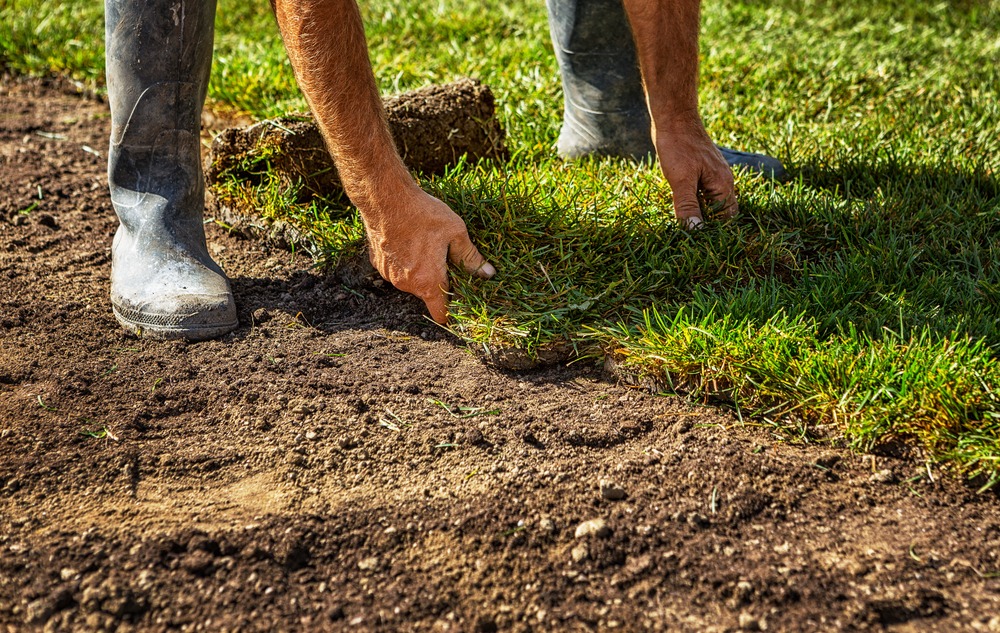You just built a new Long Lake home, and you’ve put a lot of thought into creating a beautiful lawn, so take note of these important reminders and new lawn tips for new homeowners:
- Insufficient water and over-watering are the leading causes of new-lawn failure.
- Take precautions to prevent damage and minimize play and foot traffic on new and sodded lawns for at least three weeks.
- Do not fertilize new lawns for at least six weeks. After six weeks, apply a light fertilization of ½-pound nitrogen per 1,000 square feet. Thereafter, fertilize according to the recommendations given for established lawns.
Sod: Water your new sod at least twice a day, including once midday. Keep the soil moist to a depth of 1 to 2 inches. Check to make sure that soil does not stay saturated for long periods of time; otherwise the plants may not root. Reduce watering frequency to every second or third day once lawn has begun new root growth (about two weeks). After four weeks, a sodded lawn can survive for longer periods of time without water.
Do not mow a sodded lawn for at least 10 days after installation and until the grass has begun to grow vigorously. If you use a rotary mower, set the throttle low to avoid lifting and chopping up pieces of sod.
After 2 to 3 weeks, if you have been watering properly, the sod should have a well-established root system. When you gently tug on the grass, it shouldn’t pull up from the soil.
Seed: For newly seeded lawns, set sprinklers to mist the surface four times a day, beginning at 7 A.M. and finishing at 6 P.M. Keep the seedbed moist, but not saturated, to a depth of 1- to 2-inches. As seedlings grow to a height of 2-inches, reduce the frequency but increase the depth of watering.
Begin mowing after the grass has grown to a height of 3 or 4 inches, before it falls over in a slight breeze. Set the throttle of your mower on low to help prevent seedlings from uprooting. For your first mowing, remove just enough (1/2- to 3/4-inch) to give your lawn an even appearance. Next time, cut to the maximum height recommended for your type of grass, but do not remove more than 30% of the blade in any single mowing. Once sprigs and plugs are established, regular mowing will encourage lateral spreading.
Plugs or Sprigs: Water your new plugs or sprigs at least twice a day, including once midday. Keep the soil moist to a depth of 1 to 2 inches. Check to make sure that soil does not stay saturated for long periods of time; otherwise the plants may not root. Reduce watering frequency to every second or third day once lawn has begun new root growth (about two weeks).
Begin mowing after the grass has grown to a height of 3 or 4 inches, before it falls over in a slight breeze. Set the throttle of your mower on low to help prevent seedlings from uprooting. For your first mowing, remove just enough (1/2- to 3/4-inch) to give your lawn an even appearance. Next time, cut to the maximum height recommended for your type of grass, but do not remove more than 30% of the blade in any single mowing. Once sprigs and plugs are established, regular mowing will encourage lateral spreading.
Weeds: It happens. That’s because dormant weed seeds are always present in the soil, and they’re waiting to sprout when they get a chance. Weeds pop up now and then among newly planted grass, but that doesn’t mean you should treat them right away. A good rule of thumb is to wait until you’ve mowed your new grass at least 4 times before you treat the weeds with weed-control products. The exception is if you are using a weed-control product specifically designed to be used when seeding. As always, remember to read and follow the product label directions for the weed-control product you are using.
Insects: Bugs in a new lawn are very common, but you’ll want to protect your new grass with an insect control product. Most products labeled for insect control can be applied any time on newly planted grass. Even so, remember to always read and follow the label directions before applying an insect control product.


